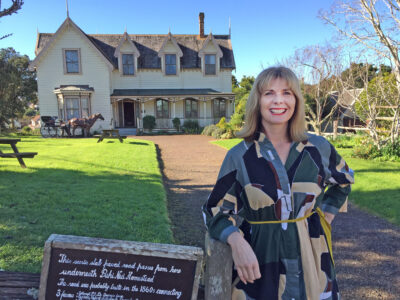
One of east Auckland’s most well known tourist attractions has created a strategic plan in an effort to ensure its survival.
The Howick Historical Village went into “semi-hibernation” for about five months, reducing operations and closing to the public when the country was plunged into lockdown due to the Covid-19 pandemic.
It underwent a restructure that reduced its workforce and lost a large portion of its income.
“It was brutal and really hard for everyone including the staff who were made redundant and the ones still here because of low morale,” general manager Krissy Perrett told the Times.
“We got through it and try to keep open and honest communication with everyone.
“That’s how we survived and we’ve been able to rehire two of those people.”
Perrett says she was worried about the village’s cash position and longevity, but the situation provided time to “step back and say we don’t want to be here again”.
Shutting due to Covid resulted in the village losing half its visitors, which came from overseas tourists.
That inspired creation of a strategic plan Perrett hopes will lead to more people going to the village in Lloyd Elsmore Park, Pakuranga, and an increase in income, thereby ensuring its future.
She says it’s shifting focus from being “product-centered” to “customer-centric” and asks what purpose its archives collection serves if no one is paying to visit.
“By shifting our direction just slightly and becoming more customer-centric, and having more good quality experiences for visitors, our hope is we’ll increase the sustainable revenue and our funding.”
Work is already being carried out to make the village a more attractive destination.
Its physical appearance is being spruced up and Perrett is looking to implement a family-focused holiday programme, more cooking activities, and more “hand’s on” initiatives for youngsters to get involved with.
“We’re also looking at creating a little bit of play space for children,” she says.
“We want more things to increase dwell time and visitor satisfaction.
“We got down to one chicken but we’ve added another nine chickens that wander around and we have two rescue bunnies.
“We’re trying to think of things to make us unique.”
The village is also expanding its reach by creating an account on the social media app TikTok.
“We saw a huge trend in the US and UK with living history museums going onto TikTok and using their costumes, backgrounds, and actors to bring history to life,” Perrett says.
“We can use TikTok to engage with Gen Z and Millennials.
“We know we need to make ourselves a bit more relevant and we need to position ourselves a bit better.”
Perrett says the village is also keen to engage more with local iwi Ngai Tai ki Tamaki.
“We tell a really great Fencible story and it’s such an interesting story that I don’t think a lot of New Zealanders know as part of our history.”
She says a large percentage of the village’s funding comes from Auckland Council via the Howick Local Board and it would not be open without it.
Local board chairperson Adele White says the board continues to provide funding to the village “to ensure this wonderful asset to our community is maintained”.
“We’re fortunate to have the village both as an attraction and a unique resource that allows visitors to learn about Howick’s Fencible history in an interactive way.”









